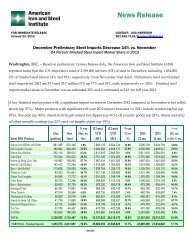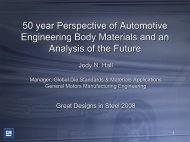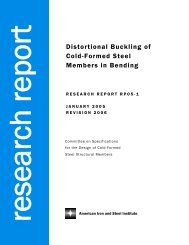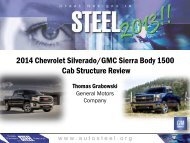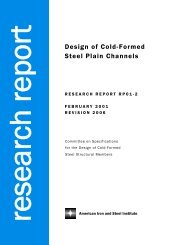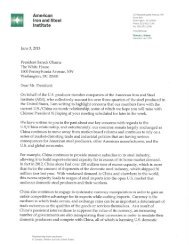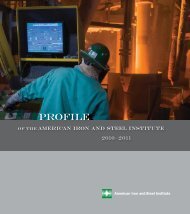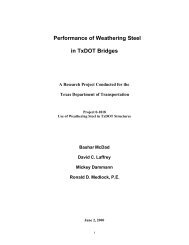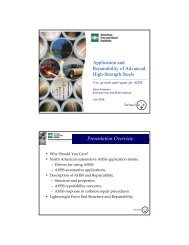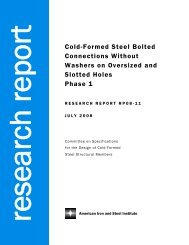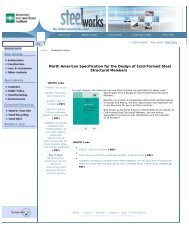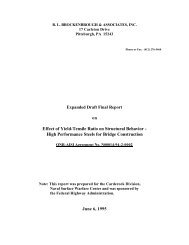Statistical Analysis of Structural Plate Mechanical Properties (Part 1)
Statistical Analysis of Structural Plate Mechanical Properties (Part 1)
Statistical Analysis of Structural Plate Mechanical Properties (Part 1)
Create successful ePaper yourself
Turn your PDF publications into a flip-book with our unique Google optimized e-Paper software.
carbon equivalent values measured was small; for an individual mill in the 4-mill group,<br />
the largest coefficient <strong>of</strong> variation for any heat and thickness group was 8.26% (for the<br />
A588-T1 group). Also, when the mean from all mills was considered for any thickness<br />
group, the largest coefficient <strong>of</strong> variation was 6.67% (for the A572-T2 group).<br />
Similarly, from Table 3.6, it may be observed that Mill 2 had relatively higher<br />
variability <strong>of</strong> the carbon equivalent than Mill 6 with coefficient <strong>of</strong> variation values<br />
ranging from 18.3% to 26.4% for Mill 2. The average carbon equivalent for the 2-mill<br />
group ranged from 0.32% to 0.48%.<br />
Tables 3.5 and 3.6 also show that the carbon equivalent generally increases with<br />
increasing plate thickness for both steel grades. This trend may be attributed to the mill<br />
practice <strong>of</strong> adjusting the carbon content in thicker plates in order to maintain a desired<br />
strength through the entire thickness. The specified alloy content <strong>of</strong> A588 leads to the<br />
higher carbon equivalent values relative to A572 plates <strong>of</strong> the same thickness as was seen<br />
in the data. The similar ranges <strong>of</strong> carbon equivalent values obtained for both mill groups<br />
reveal that the studied plates from all the mills possess about the same degree <strong>of</strong><br />
weldability.<br />
18



